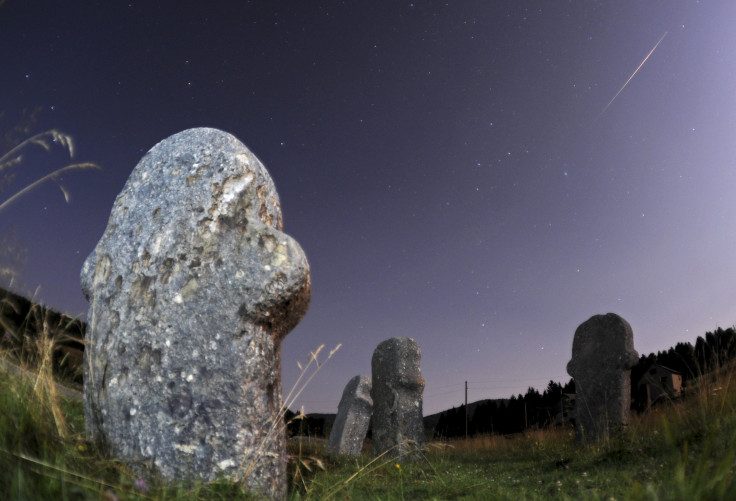Perseid Meteor Shower 2015: The Perseids Will Dazzle This Week, Weather Permitting

The sleepy stargazing summer is coming to an end with the main astronomy event of the year. The annual Perseid meteor shower peaks this week, and it should be a dazzling show for amateurs and pros alike. A waning moon will lead to favorable viewing conditions Wednesday when the Perseids peak.
.
Last year's Perseids had to deal with Supermoon 2014 stealing headlines. The full moon took place Aug. 10, 2014, and the bright light from the waning moon blocked out dimmer meteors and diminished hourly counts. That won't be the case for the Perseid meteor shower in 2015 as there will be a new moon Friday. A waning crescent moon will be practically invisible in the night sky, which makes viewing the Perseids pretty easy as long as the weather and clouds cooperate.
"During this period the moon reaches its new phase on Friday August 14. At this time the moon is located near the sun and is invisible at night," the American Meteor Society explained. Stargazers can observe shooting stars from the Perseids throughout the week and in the evening, but predawn hours will provide the most rewarding experience. On Thursday morning, around 4 a.m. EDT, one will be able to see up to 100 meteors per hour, according to NASA. Friday's new moon means weekend Perseids viewing also will yield good results.
Four views of same Perseid meteor from 4 stations on NASA All-sky Fireball Network Aug 10, 2015 at 02:53:59 UT pic.twitter.com/qtB6HrOuNk
— Charles Bell (@cbellh47) August 10, 2015The Perseids gets its name from the perceived radiant -- area of origin -- of the meteors. In this case, the shooting stars appear to be coming from the constellation Perseus, but Comet Swift-Tuttle is actually responsible for the meteors. As part of its 133-year journey around the sun, the comet leaves behind a stream of dust and debris. Each year around mid-August, Earth crosses into Swift-Tuttle's trail and the debris burns up in the planet's atmosphere.
Swift-Tuttle leaves behind a very wide trail of debris, which means plenty of Perseid viewing experiences throughout August. In addition to the sheer volume of meteors, the Perseids are known as the "fireball champion" of meteor showers. "The Perseids are rich in fireballs as bright as Jupiter or Venus. These will be visible in spite of the glare," Bill Cooke, from NASA's Meteoroid Environment Office, said in a statement.
There's some hope that the Perseids will produce more meteors than usual, according to Universe Today. Based on models tracking the Perseids, this year's meteor shower could produce more than 100 meteors per hour. It appears Earth will cross the dust trail left behind in 1862 and the last time the planet crossed that particular stream -- in 2004 -- there was a peak of 200 meteors per hour for two hours.
The best viewing of the Perseids occurs away from ambient light. Find a dark place and look northeast toward constellation Cassiopeia -- shaped like a W -- and Perseus should be just below that. Sky and Telescope has a good map of the night sky and the Perseid radiant.
© Copyright IBTimes 2024. All rights reserved.











